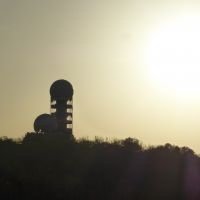-
Posts
282 -
Joined
-
Last visited
About Stephen Sanchez

- Birthday 10/17/1985
Profile Information
-
Occupation
Cinematographer
-
Location
Tampa, Florida
-
Specialties
Scientific study of light, commercial photography
Contact Methods
-
Website URL
https://www.stephenclarksanchez.com/
Recent Profile Visitors
8,901 profile views
-
I think we found the perfect VFX folks to comment on it for us. Corridor Digital we're happy to help. Unfortunately our schedules didn't allow for one of them to fly in. So they made a video for us to present during the show. For anyone who's curious, here's the result of this effort. After Corridor's video plays, the reaction was... You know, I've never experienced an interview like this before.
-
I'm just looking for a VFX artist that can comment on.
-
Hi friends, I'd like some VFX artist references. We booked an interview a week from now with a guy who claims the authenticity of two leaked videos from 2014 that show the fate of Malaysian Airlines Flight 370 (his twitter post on the matter). The two videos in question are below. Both are presented to be recorded simultaneously. So, two vantage points. Stereo Satelite: https://web.archive.org/web/20170606182854/https://youtube.com/watch?v=5Ok1A1fSzxY FLIR: https://web.archive.org/web/20140827060121/https://youtube.com/watch?v=ShapuD290K0 Regardless of the information portrayed in the videos or the speculative claims made by the poster, I'd like to have an opinion from an industry VFX artist on whether this is produced or captured. I only know editors, so I'm asking folks here who may have connections that can assist. Thank you my friends. You can DM me to share contacts. Our team would like to chat, zoom call, or fly the person out. Thank you.
-
Try again with a picture. You've uploaded a .webp
-

Flickering LED lights?
Stephen Sanchez replied to Joerg Polzfusz's topic in Lighting for Film & Video
Shutter on the camera side is the best value to adjust. We'd all prefer to change the fixture, but if that's not possible, at very least walk down on your shutter. The Sony camera's I've shot with allow you to change your shutter on a frequency level. FX9 and FX6 call this "ECS mode." Venice allows something similar in the shutter menu by switching to Cont. (continuous). I'd have to do this to sync to LCDs on alarm clocks, oven screens and other electronics. -
@Ofri Margalit I'd love to know how it went!
-

Day interior lighting: WB, CT by look
Stephen Sanchez replied to Nathaly Pinheiro's topic in Lighting for Film & Video
Sunrise and sunset are technically the same. I say "technically" because scientifically they are the same process. In Florida though (where I live), sunsets are typically redder because clouds have formed during the day cycle and red light hits those clouds, and skylight hits those clouds and they glow pink and purple and the colors bounce down to the neighborhoods. During overcast sunsets, the clouds are yellow. So this is where you can take artistic license to differentiate if you'd like. I understand why you're changing your WB, to keep from gelling your lights. It becomes easier when you don't have to do that anymore. Try to have color tunable fixtures, or half CTO and half CTB gels at least, to adjust beyond what the fixtures give. You noted that some DPs do things different sometimes. A good DP and gaffer will take into account science of the light for the scene, along with art. Some may lean into art more than science, some may lean on science with little art. Because our work is for entertainment, or to sell brands, there is an inherent bias toward the treatment of the material, and so our work contains cheats and adjustments that would not normally appear in reality. So your DP did something he felt was appropriate for the material that diverted from science. A sunset for Transformers is different from a sunset for Tumble Leaf, or Pitch Black. But also, keep in mind that some folks don't understand the difference between science and art lighting at all. So just because somebody does something, doesn't mean that is true for other workers. I think you're on a great track. Keep learning about the science and it will allow you to dissect other's setups more confidently. Keep in mind though that observational learning means nothing without testing. -

Ambient Light or Front Fill Strategies
Stephen Sanchez replied to Dan Quigley's topic in Lighting for Film & Video
Hello Dan. Examples of your work always helps us give a more tailored answer. So, on lighting. I ran into this situation at a studio I worked at with a newly hired in-house DP. He asked me the same thing, as he'd never worked in a studio. And I told him to "add a window." So long as it's off screen, it doesn't matter. If there's a dark hole, add a window off screen, or a lamp in the room, or "lamp light" from off screen. You'd be surprised how easily the brain justifies it without explanation. But it must interact with the whole room, not just the subject. It's important to remember that windows are not 1x1ft panel lights. They are generally 4x4ft, or 4x8ft, and can even be "cheated" to be larger if desired. I use bounce only for window light, and cut the top off. Add sun in you want. Try to keep the sun fixtures outside the windows. I find it easiest to light the room in this way first. Then, move onto the face. Key with your choice. But remember that the fill side is the ambient bounce of the room. Now if you're in a studio with half-sets, then there are no real walls to return onto the face, so it ends up being super dark. So you'll have to "recreate the room" as the face sees it. This can be done with white or gray cards/surfaces, then back it off until you get the desired ratio. I personally like to go bigger than key for fill, but you'll figure out what you like as you keep at it. Do this, and you'll find that you'll see detail. If you're on location. It becomes easier since the rooms naturally fill. I will sometimes "add a window" if necessary here. But I've found that throwing light through the windows, adding interior lamps or motivated "lamp light" off screen, does the job fine. And then I move on to the face. -
I would go for rgbww panels, like aputure nova. Fire is very low in CCT so you'll want a light that can go that far. Also, Astera Titan tube lights have a pixel tech that makes for a dynamic dancing fire effect. I've always ran AC, so you'll have to find your light's runtime on a brick battery and compare the brick's Watt-hours to your portable battery's watt-hours. Batteries-only is tough because there is no safety net, so I would make sure you had either several extra batts, or an inverter genny as a backup.
-

How to achieve this look
Stephen Sanchez replied to Dimitra Petmeza's topic in Lighting for Film & Video
I've shot dozens of commercials with tungsten, hmi, and led on sony sensors. And I've not seen anything to suggest modern led has issues with color. What information do you pull from? I'd love to read it. LED is quite fine. For small-to-mid size productions, they are seriously replacing smaller HMI units as their wattage increases. For example, a 1200w HMI par goes for under $2k on ebay right now, which is is nuts! And that's with inflation! A nova panel outside won't do very much, honestly. A 1200w led hard light will however push very well as a "sun." A combo stand is safer than a standard light stand outside, FYI. It's mass makes it sturdy. Indoors, I've used one panel light, like a nova, to bounce into walls or white cards to wrap the face. They are 180 degree fixtures, so they can be close to walls and still fill a large area, compared to the COB versions. If you have the budget and an extra hand, then a couple ultraflops are fast white surfaces indoors. Cheers Dimitra, and have fun with it! -

Teradek Bolt Old vs. New?
Stephen Sanchez replied to Stephen Sanchez's topic in Camera Assistant / DIT & Gear
Hey Gabe! You are always a wealth of knowledge. Thanks, brother. -
Other than resolution, what's the difference between the older HD Teradek Bolt and the new 4K versions? Are they the same tech, just with 4K bandwith? Or are the newer ones more reliable signal-wise? I've seen a bunch of old Bolt 300's on ebay and have thought about grabbing a set. But I'm not sure if they are now using more congested frequencies. Thanks folks!
-

Shooting Handheld in River Advice
Stephen Sanchez replied to Mateusz Czopek's topic in Camera Operating & Gear
I was going to suggest a housing as well. Some of those new mirrorless cams can now be wirelessly controlled via bluetooth and a Portkeys BM5 monitor. Phillip Bloom is on the scene with more: -
Stephen Sanchez changed their profile photo
-
I know this is late, but perhaps it can help others who search it. A key light is the principle source (or sources) used to bring the face to exposure. Its intensity and size have no rules. Its exposure level has no rules. It may be brighter or dimmer than the back light. In order to see the face, light must fall on it to reflect into camera, so a minimum angle to camera is 90 degrees. Fill is the rest of the environment that surrounds the face. Although the opposite of key tends to be made darker for contrast. In some cases, the face can be fill only, with no key side.
-

Lighting questions from a newbie
Stephen Sanchez replied to Edith blazek's topic in Lighting for Film & Video
4) Regarding the parabolic softbox. Karl Taylor explains that subject very well. To continue the rest of your question about the diffusion's bounceback into the reflector. That occurs in every softbox with white diffusion. But the return doesn't "intensify" as maybe you think. Some softboxes are white-lined as opposed to silver, which helps to create as much of an even glow from end to end on the diffusion layer. I hope this was helpful.







